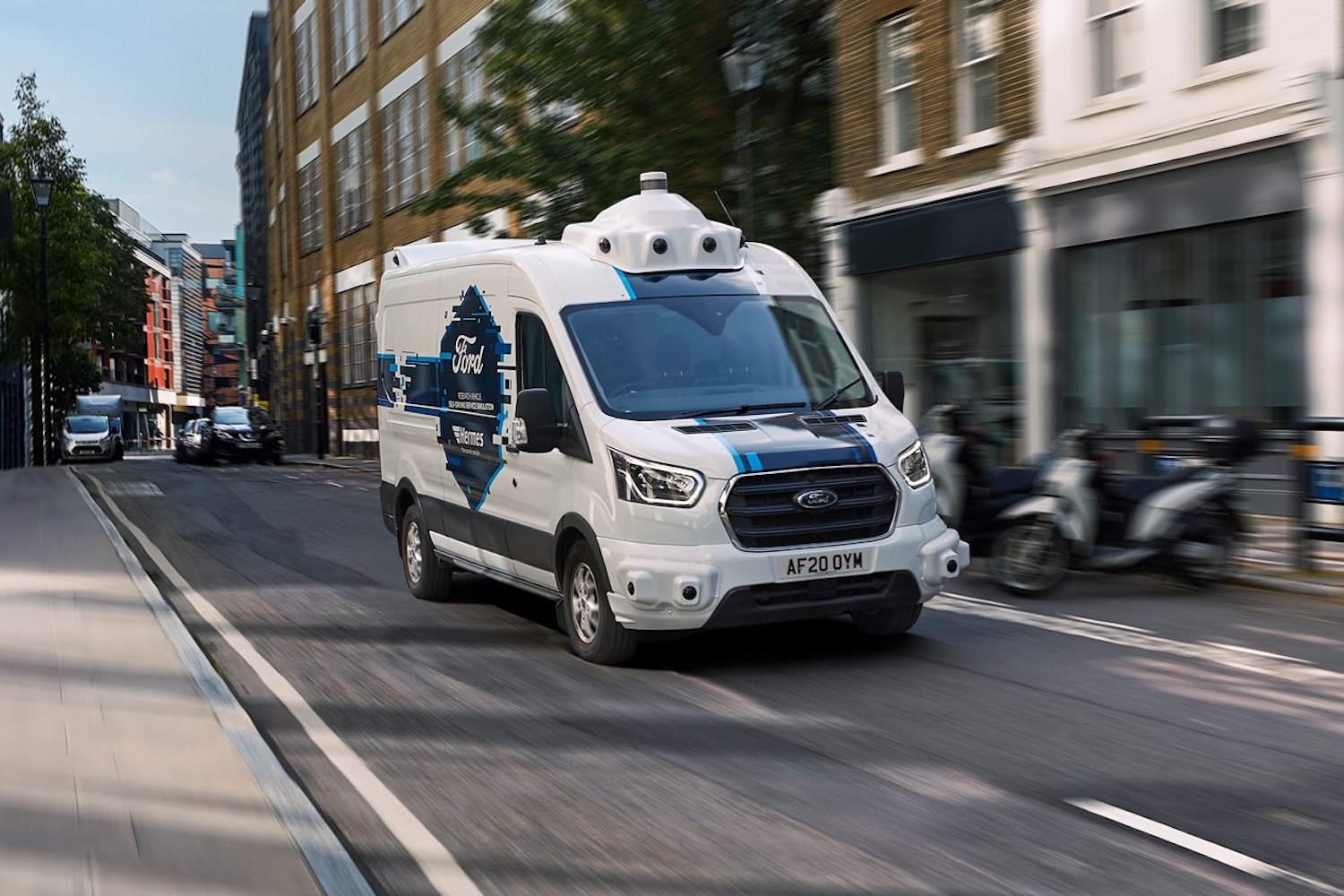When is a self-driving van not a self-driving van? When it’s a pretend self-driving van. That was the case with a Ford Transit that was recently used in a trial in London by Ford and delivery company Hermes to test people’s reaction to the technology.
In most respects it looked like an autonomous vehicle, with cameras and Lidar and other tech bolted onto the roof. However, it was all part of a ploy to convince people it was driving itself and see how they reacted to it.
“The van is a mock up of what an autonomous vehicle (AV) will look like and that is part of the research,” Richard Balch, director of autonomous vehicles and mobility at Ford Europe, told us. “If we make something that looks convincing, it actually doesn’t take long for people to suspend reality.”
The trial was about more than just the psychology of it all though, it was also about testing the technology required for delivery services using a self-driving vehicle and an army of last-mile human couriers. Balch explained that some of the main aims included finding out how humans interacted with the technology and how a business that adopts it might need to adapt to make the best use of it. This meant that while on the outside the Transit was a mock-up of an AV, on the inside the technology was also fully operational, as were the systems to support it, such as apps.
It’s all about that last mile
The couriers are notified when the van arrives using an app, which they can also use to open the van. Once inside there are a number of lockers, much like those you will find at an Amazon drop-off or collection point and here the app will direct the courier to the correct one so they can grab the package and fulfil the delivery.
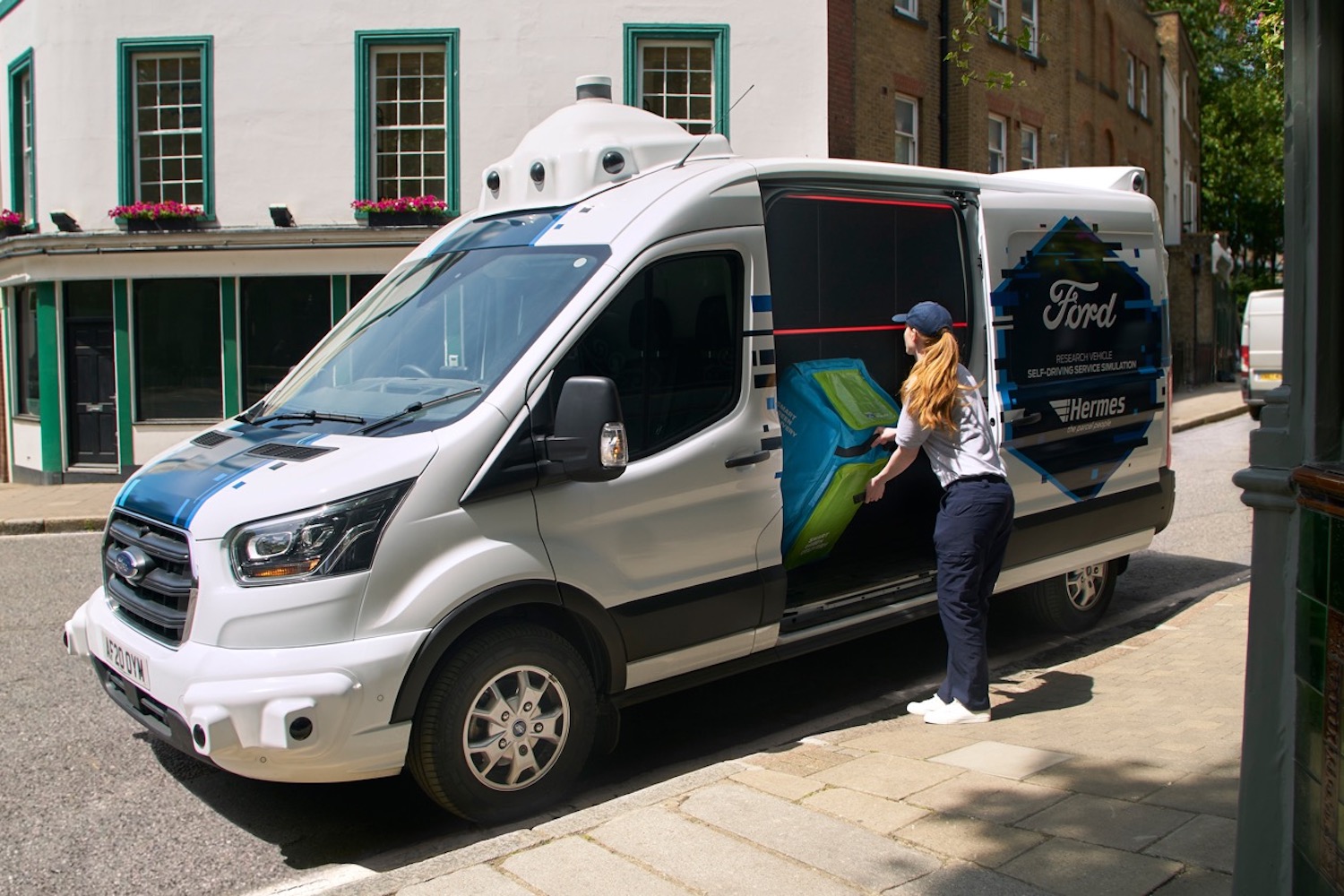
“We had the idea not to have loads of vans driving into the city centre and touring round dense urban neighbourhoods where the van struggles to find parking spaces,” says Balch. “Five years ago we began looking at getting the van to do the heavy lifting by bringing the parcels from outside of the city in. Then in dense areas you can give those parcels to foot porters or cyclists to do that final piece and that’s what we’ve been testing for the last nine months and it works really nicely.”
So nicely, in fact, that Balch and his team reckon that between half and three quarters of the vehicle movements are actually taken out altogether.
Balch acknowledges that there is plenty of work to do when it comes to combining humans and technology together effectively. However, as a mechanical engineer, he is used to working out how a car works with a human in it and how the human interacts with the vehicle in a way that they are comfortable with.
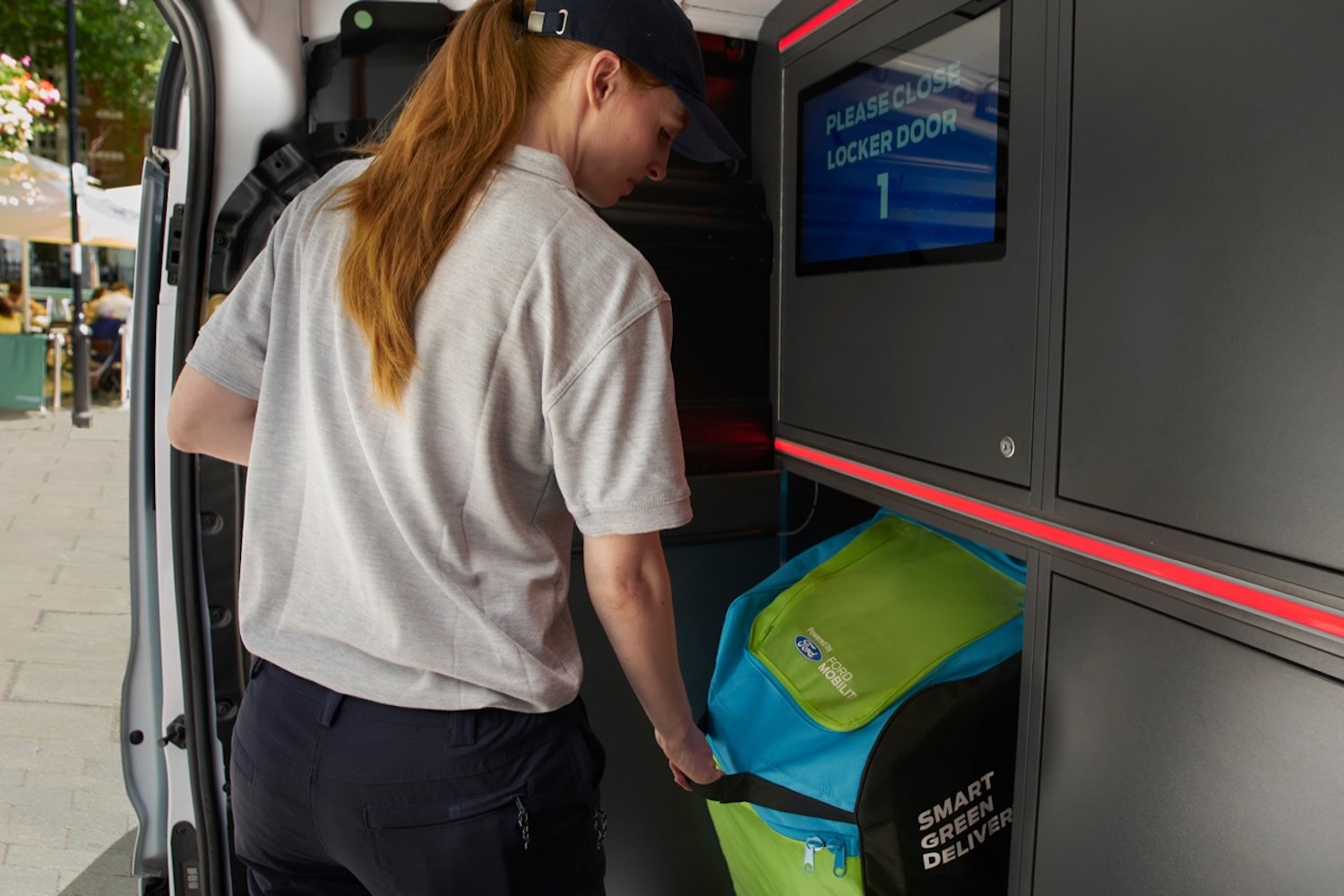
Why not use robots to do the last mile?
We saw Daimler showcase this technology a few years ago. A van arrives at a point and motorised delivery robots, similar to those that already do fast food deliveries in London, emerge from the van and deliver the package. Balch agrees that these robots have their place, but they also have limitations, especially when it comes to multi-storey buildings, varying sizes of packages and so on. Instead, there will need to be different solutions for different needs and environments.
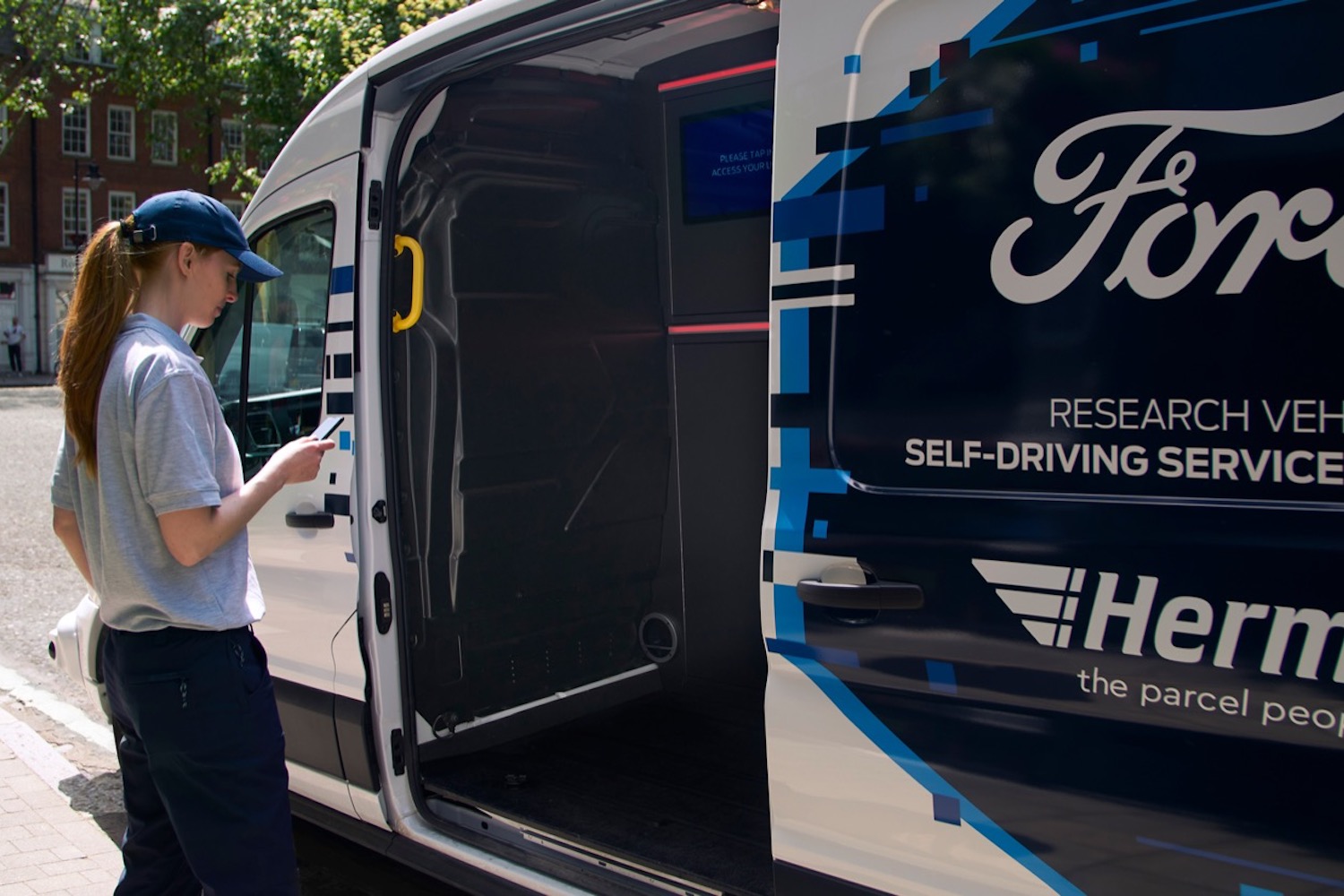
What other lessons were learned from the project?
Ahmad Jasim, business design lead for AVs at Ford Europe told us that one of the big lessons relates not to the vehicle or the people but the infrastructure. He told us that on many occasions a courier used the app to hail the vehicle, but when it arrived it could not physically park at the location, either because of restrictions or because someone else was now in the parking space. He says that for all this to work in the future, there will need to be dedicated spaces for AV parking. That will then require some form of charging, enforcement and so on, all things which still need to be worked out.
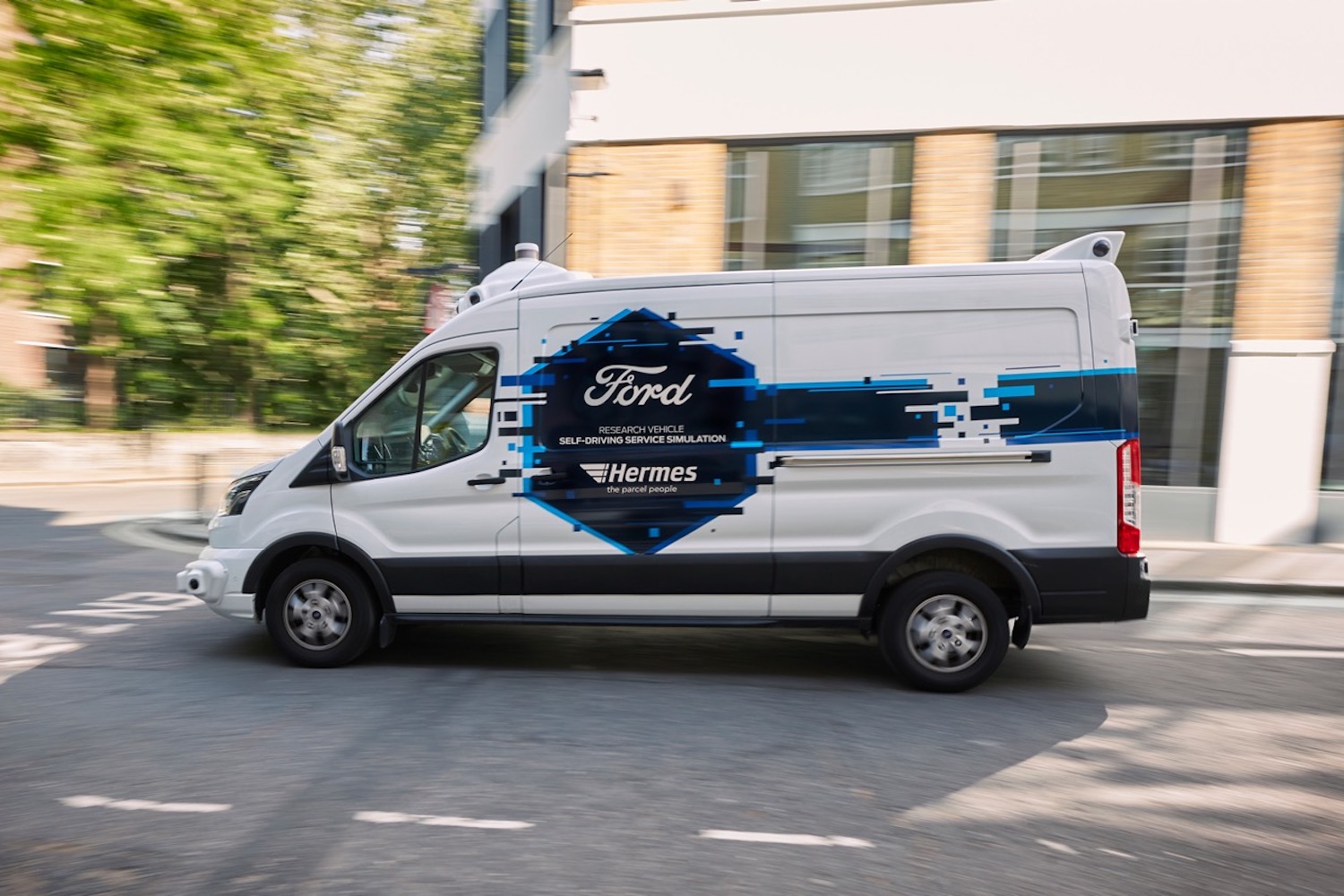
So what’s next?
“We are working with a number of partners, customers of Ford to run similar trials to look at how autonomous vehicles could fit into their operations and we want to do more,” says Jasim. He and the rest of the team are looking for partners, including those that don’t currently use Ford vehicles, to work on trials over the next 18 months looking at how the technology and autonomous vehicles can fit into their business and industry.
At some point that means the mock-ups will become the real thing, by which point the hope will be that we’ve all become much more used to living with the next generation of technology.


